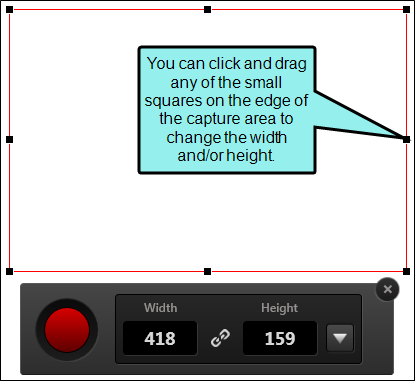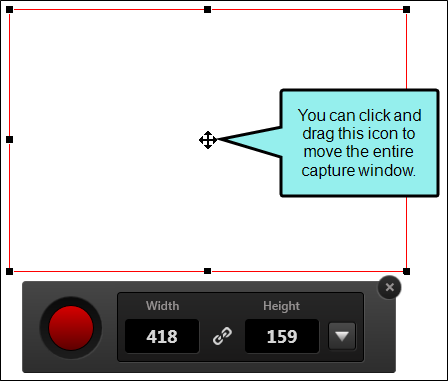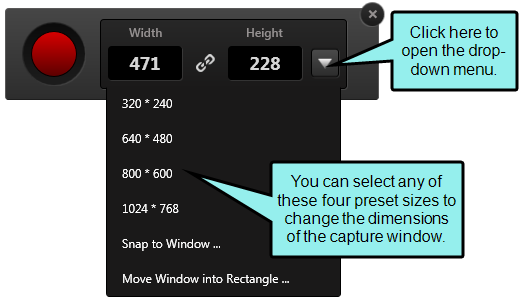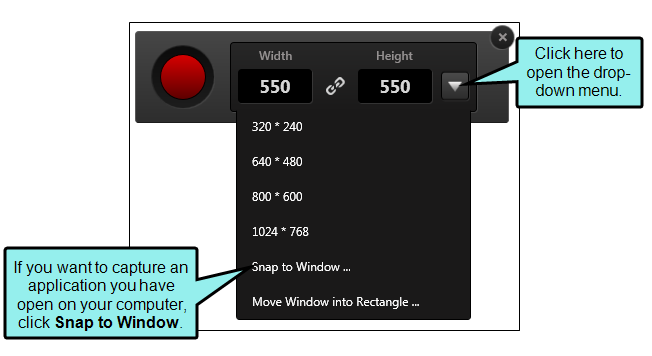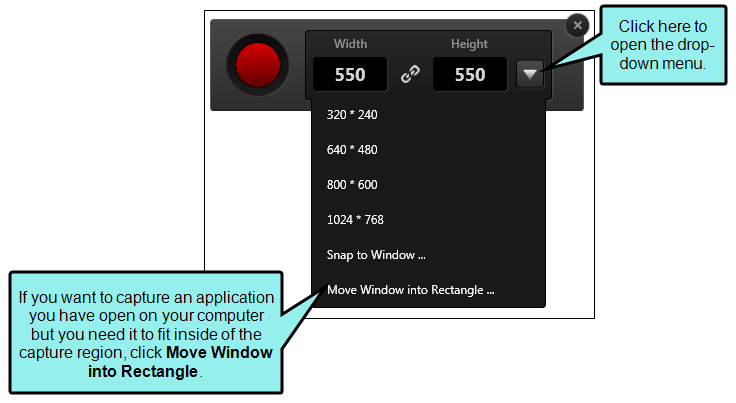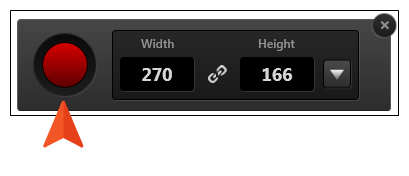You can insert images into content files (e.g., topics, snippets). Flare Desktop supports the following types of raster and vector image files: BMP, EMF, EPS, EXPS, GIF, HDP, JPG, JPEG, PDF, PNG, PS, SVG, SWF, TIF, TIFF, WDP, WMF, XAML, XPS.
How to Add a Screen Capture File to a Project
-
Do one of the following, depending on the part of the user interface you are using:
- Ribbon Select Project > New > Screen Capture.
- Right-Click In the Content Explorer, right-click on a folder and from the context menu select New > Screen Capture.
The Screen Capture dialog opens.
- Complete the appropriate setup fields in the dialog:
- File name Enter a name for the image that you are capturing, or you can use the default name provided.
- Folder Select the folder where you want the captured image to be stored in the Content Explorer.
- Profile or Format Select the profile or file format that you would like to use when capturing the image. If you select a file format (BMP, GIF, JPEG, PNG, TIFF), the image will automatically be saved in that format. A profile (created in MadCap Capture) lets you capture the image with many additional settings applied to the image in advance.
- Launch MadCap Capture Editor Select this check box if you want MadCap Capture to be launched when you capture an image. The image will be displayed in MadCap Capture. This is a useful option if you want to edit the image (e.g., add callouts, lines, borders) after you capture it. When you edit and save the image in Capture, the changes will automatically be reflected in Flare Desktop.
- Select the capture option that you want to use, and complete the steps for each one as necessary:
- Capture UI Element Captures a fixed area of a window (e.g., menu bar, toolbar, editor, individual button, entire window), depending on where you move your mouse and click. As you move the mouse in an application, a red border surrounds each separate region.
- Capture Application Captures an open application. When you click this button, the Select window opens, displaying a list of all open applications. You can select the application that you want to capture.
Capture Region Captures a rectangular region of your computer screen. When you click this button, a rectangle with a red border displays over your screen. You can move and resize this rectangle in several ways.
Drag Edge
You can resize the capture area manually by clicking any of the handles (small squares) around the edge of the rectangle and dragging them to resize the width and/or height.
Move Entire Capture Area
You can move the entire capture area by clicking the size-all icon in the center of the area
 and dragging the area to a new location on your screen.
and dragging the area to a new location on your screen.Type Width or Height
You can click in the number fields in the task bar to manually change the width and/or height of the capture window in pixels.
Select Capture Size
You can click the drop-down arrow and select a preset size for the capture window.
Select an Application
You can click the down arrow and select Snap to Window to choose an application to capture. This option will capture the application at its current size.
Note Capture will ignore applications that have been minimized. If you want these applications to appear as selections in the Select Window dialog, ensure they are open and have not been minimized.
Select Move Window Into Rectangle
You can click the down arrow and select Move Window into Rectangle to choose an application to capture. This option will minimize the application window to fit into the capture area you drew.
Note Capture will ignore applications that have been minimized. If you want these applications to appear as selections in the Select Window dialog, ensure they are open and have not been minimized.
To capture the region, click the red capture button on the task bar.
Capture Regions Consecutively Lets you capture multiple images without having to select the capture option each time. The most recent capture region is shown each time. In between each consecutive capture, you can relocate and resize the region as well as manipulate the onscreen content you want to capture. When you are done capturing images, click the X to finish.
Note This feature is available only when adding screen captures, not inserting them.
